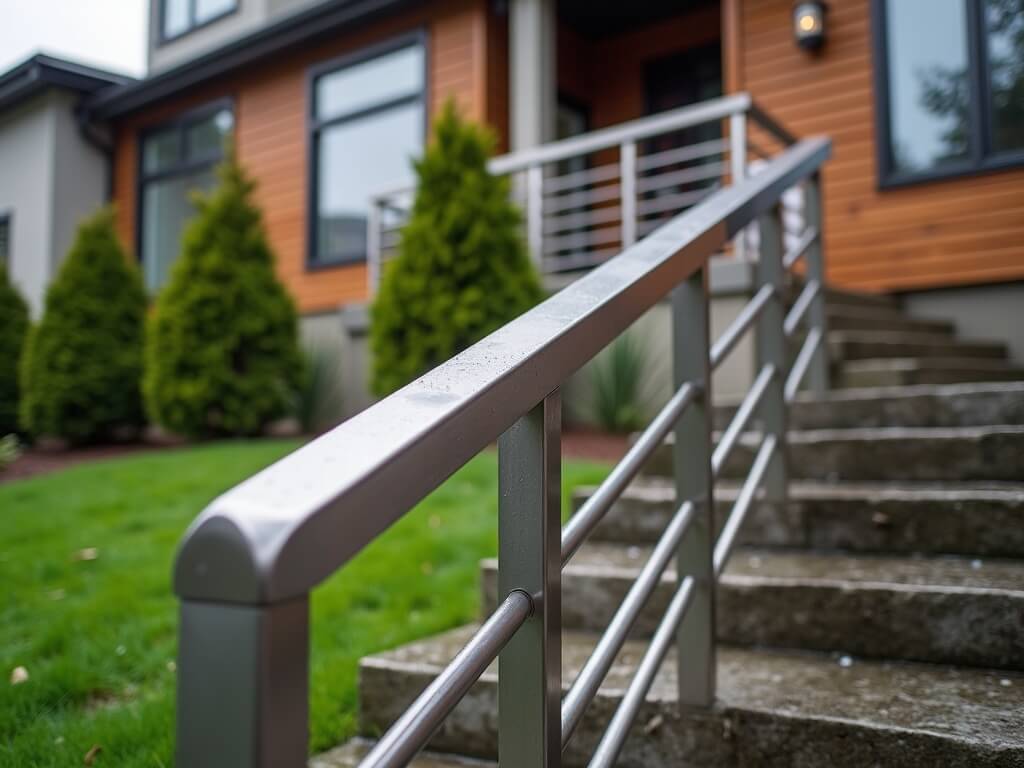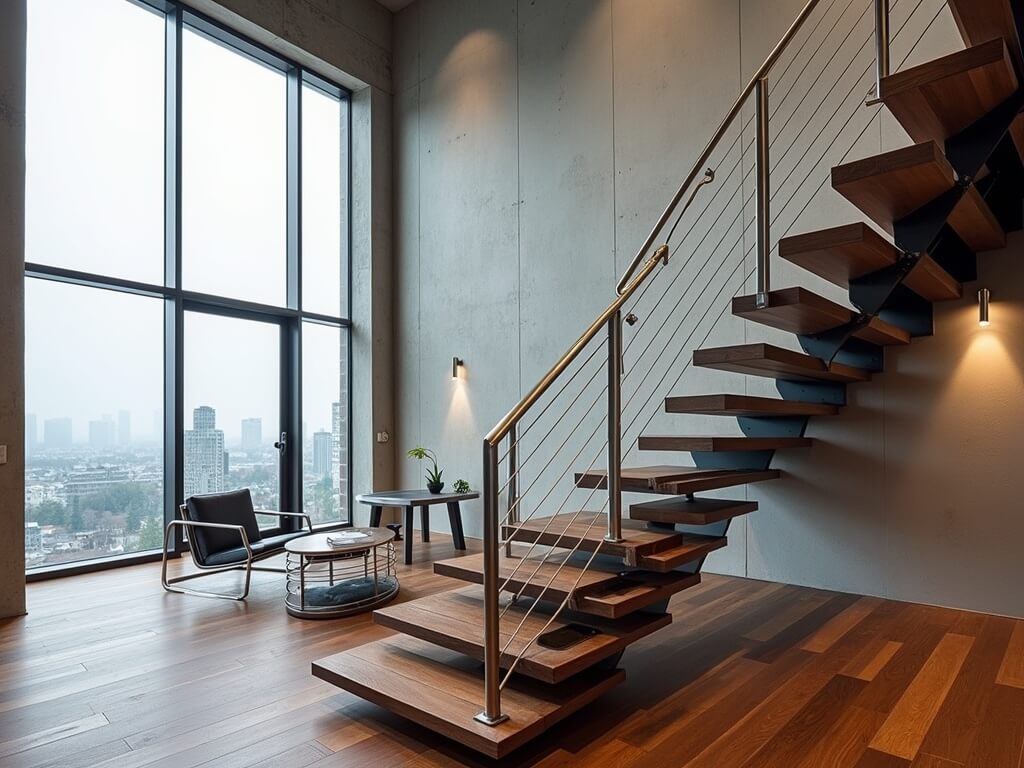Custom Metal Handrail Installation in Seattle: Safety, Style, and Compliance
In Seattle’s challenging climate and terrain, custom metal handrails offer unmatched durability, safety, and design versatility—making them a smart, code-compliant upgrade for both homes and businesses. Low-maintenance and fully customizable to suit any aesthetic, these railings boost property value while standing strong for years to come.

Handrail installation isn’t just about checking off a safety box—it’s about creating a strong and stylish support system that protects your family, your clients, and your property value. And if you're in Seattle, where wet weather meets steep terrain, custom metal handrails are quickly becoming more of a default than an upgrade.
Why? Because they’re tough, modern, and, frankly, look incredible when done right.
Why Every Seattle Property Needs Strong, Beautiful Handrails
You’d be surprised how many people in Seattle call us after a slip or even just a close call.
The city’s topography is no joke—steep driveways, multi-level homes, slick outdoor stairs. Handrails aren't optional if you care about safety or staying up to code.
Here’s why they matter:
- They reduce fall risk—especially for older adults, kids, and guests unfamiliar with your property.
- They’re legally required in most cases with steps, slopes, or raised surfaces.
- They increase usability—think hauling groceries, climbing icy steps during December rain, or simply offering extra balance.
The big one? Local safety codes.
Seattle’s building codes are strict. Height, spacing, strength—all must meet local standards. Fail to comply, and you risk costly fixes (or stop-work orders).
Want peace of mind? Get the right handrail, installed correctly, the first time.
Pro Tip: Seattle requires handrails on stairways with four or more risers. The handrail must be between 34 and 38 inches above the stair tread nosing and be continuous for the full length of the stairs.

Not All Handrails Are Created Equal
You’ve got options: wood, composites, and of course, metals.
Here’s how they compare:
Wood:
- Classic vibe, great for traditional homes.
- Downside? Maintenance. Seattle’s moisture is brutal on untreated or poorly sealed wood.
Composite:
- Lower maintenance than wood.
- Less durable in harsh use areas.
Custom Metal (what we specialize in):
- Extremely durable.
- Looks sharp—modern or traditional, your call.
- Low maintenance, rain-proof, rust-resistant (especially in stainless or properly coated aluminum).
Metal wins in Seattle. Hands down.
I’ve replaced dozens of decaying wood railings that clients installed just five years back. If they had gone with aluminum or stainless, they’d still be solid. One homeowner told me, “We thought wood would save us money—but the replacement ended up costing double.”
When choosing handrails, think long-term—not just cost today.
The Real Advantages of Custom Metal Handrails in Seattle
Let’s break it down.
Why go custom—and why metal?
Durability
Seattle’s weather shifts fast. Sun, rain, humidity—all in one day is normal.
Standard steel or iron rusts without treatment. That’s why we work with stainless steel, aluminum, or powder-coated steel. These withstand Pacific Northwest abuse, year after year.
Aesthetic Flexibility
Custom doesn’t mean flashy unless you want it to. We can build sleek, minimalist handrails that quietly upgrade a space—or bold, ornate pieces that stand out.
Some client favorites:
- Matte black steel stairs with clean horizontal lines (hello, contemporary homes).
- Wrought iron with leaf-like scrolls for a Tudor popup in Queen Anne.
- Brushed stainless railing fused with glass panels for a penthouse deck in Belltown.
Not sure what you want? That’s where customization shines. We build to match your home or building’s personality.

Low Maintenance
Set it and forget it.
Metal railings require basic cleaning—no sanding, staining, or repainting every year.
If you choose powder-coated aluminum, you’re truly in set-it-and-forget-it territory.
Where You’ll See These Handrails Around Seattle
You’d be surprised how many different properties need metal handrails—some obvious, some less so:
Residential:
- Indoor stairs (especially open-riser staircases where sleek metal fits beautifully)
- Outdoor decks, patios, porches
- Basement entries and sloped walkways
- Balcony perimeters
Commercial:
- Apartment complexes and condos
- Business entrances and interior stairs
- Restaurants with mezzanines or sidewalk seating
- ADA-compliant ramps and safety barriers
I had a gig last fall installing handrails at a Capitol Hill coffee shop. The owner wanted something “modern but not cold.” We ended up crafting a custom steel frame, lightly patinaed for warmth, with an integrated planter system along the side—it served both form and function. Turned out to be a social media magnet, too.
Indoor vs. Outdoor Considerations
Outdoors? You want rust-resistant metals and finishes that can handle freeze-thaw cycles, water exposure, and grime.
Indoors? Sometimes, the handrail becomes a centerpiece. Cable railings, brushed steel, and stainless accents elevate open-concept layouts and modern home designs.
We tailor the material and finish to each use case. That’s what custom means: https://www.goldenironwork.com/blog/custom-metal-railing
How Customization Works (and Why It’s a Game-Changer)
Customization isn’t about getting fancy for fancy’s sake.
It’s about functionality and aesthetics working together.
Here’s what that might include:
- Designing around tricky architecture (like uneven stair widths or curved steps)
- Matching finish to other design elements (windows, doorframes, cabinetry)
- Adding features like glass inserts, wood top caps, or signature scrollwork
Even small upgrades like ergonomic grip shapes or anti-slip knurling go a long way.
Most people don’t realize how much a handrail impacts the feel of a space. Until it’s wrong. Or missing entirely.
Key takeaway: Custom metal handrails should look right and feel right—without constant upkeep, even in the worst Seattle weather.
What the Handrail Installation Process Actually Looks Like
Let’s lift the hood.
You don’t have to be a contractor to understand the handrail installation process—but you’ll appreciate it more when you know what goes into doing it right.
Here’s the basic flow:
- Site Evaluation
- Measure stairs, landings, or whatever area is getting the handrail
- Check wall integrity, slope, anchor possibilities
- Identify potential code issues early
- Plan & Prep
- Finalize design based on measurements and code
- Source the right materials (we don’t use cheap brackets or low-gauge steel)
- Prep the area—clear debris, mark bracket locations, make sure anchor surfaces are solid
- Install
- Drill precise holes for brackets and anchors
- Mount brackets using heavy-duty screws or fasteners suited to wood, concrete, or masonry
- Place handrail, alignment-checked with levels, and secure it tight
- Address any sharp edges, exposed welds, or unfinished joints for max safety
- Safety Testing
- Pressurize the handrail sideways, downward, and from multiple angles
- It must hold up to at least 200 pounds of force—that’s code
- Clean & Walkthrough
- Clean the work area and do a final show-and-tell with you
- Leave you with maintenance and care tips
The biggest risk for anyone skipping steps? Loose brackets, poor alignment, and eventually, compromised safety.
Bottom line: a great metal handrail install shouldn’t just look sturdy. It should feel sturdy. Every single time you grab it.
Coming up next—we’ll get into cost breakdowns, DIY risks (hint: it’s easier said than done), when to call in a pro, and how to make sure your new handrail meets every Seattle code without you lifting a finger.
How Much Does a Custom Handrail Really Cost (And Why)?
Here’s the real talk: yes, custom metal handrails can seem pricey up front.
But when you compare the full picture—including lifespan, zero maintenance, avoided fines, and added value—it’s usually the smarter investment.
Let’s break it down:
Seattle averages for installed metal handrails:
- Standard aluminum or powder-coated steel: $39–$59 per linear foot
- Stainless steel: closer to the $60–$100 per foot range
- Fully custom, ornate designs or combos (glass, wood, complex curves): You’re looking at $1,000+ per project, even for smaller runs
One client in West Seattle wanted a custom, minimalist stainless setup running 22 feet total, anchored into concrete stairs and an upper balcony.
Their total: $2,840
That included CAD design, powder coating, and permitted professional installation.

Ten years from now, it’ll still look great. No peeling paint, no wood rot, no handyman touch-ups.
Compare that to a $750 wood railing that needs full replacement every 5–7 years because it swells, cracks, or simply comes loose.
Bottom line:
You’re paying for durability, low upkeep, and peace of mind—not just metal. And it shows.
DIY vs. Hiring a Pro: What You Need to Know Before Picking Up That Drill
I’m all for homeowners learning new skills.
But I’ve also been called in to fix dozens of DIY handrail installs that didn’t go as planned.
Not because people didn’t care—because they underestimated what’s involved.
Here’s the real comparison:
DIY:
- Requires power tools, masonry bits, proper anchors, angle grinders (for steel)
- One small miscalculation on bracket spacing = wobbly or unsafe railing
- No legal liability protection if
LET'S MAKE SOMETHING GREAT TOGETHER
Contact us today to discuss your custom metalwork project in Kent, SeaTac, Renton, Newcastle, Bellevue, or anywhere in greater Seattle.
Our friendly and knowledgeable team is ready to guide you through the design process, provide a detailed quote, and bring your vision to life. Let us help you create a lasting legacy of beauty and functionality for your residential or commercial property.

.avif)




.svg)